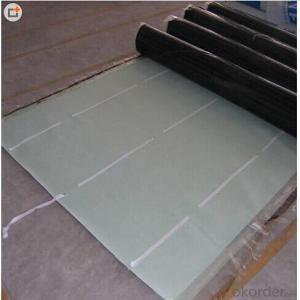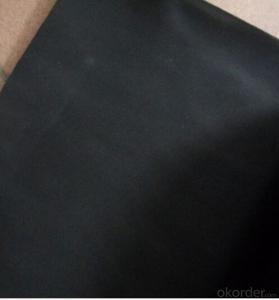EPDM Waterproofing Rubber Membrane 1.5mm 2.0mm
- Loading Port:
- Qingdao
- Payment Terms:
- TT OR LC
- Min Order Qty:
- 20000 m²
- Supply Capability:
- 100000 m²/month
OKorder Service Pledge
OKorder Financial Service
You Might Also Like
1. Product Introduction for EPDM Waterproof Membrane:
The product uses the technology of internationally advanced level-cold feed extruder continuous vulcanization, chooses imported epdm and accessories with high quality. The production is of well quality according to the national standards.
This product has the high elasticity and high elongation and high tear strength and excellent low temperature performance and water resistance, ozone resistance, aging resistance performance.
2. Product Technical Index for EPDM Waterproof Membrane:
Item | Index | |
Tensile strength (N/cm) | normal temperature≥ | 7.5 |
60°C | 2.3 | |
Elongation at break (%) | normal temperature≥ | 450 |
’-20°C | 200 | |
Tear Resistance,KN/m≥ | 25 | |
waterproofness, 30min no permeation | 0.3Mpa | |
Low temperature bending °C≤ | -40 | |
Heating expansion amount,mm | extension< | 2 |
shrinkage< | 4 | |
3. Product Application:
EPDM waterproof membranes form an effective barrier to liquid water or water vapor in the roof construction for industrial and civil engineering, underground engineering such as subway & tunnel, water conservancy such as water pools & ditch, shelter, grain depot, land filling, dyke and subway.
4. Note of Use:
Don't spread on the surface of the frozen base for the coil;
Don't construct on the pollution and moisture content on the high side at the grass-roots level;
Adhesive coil packaging and isolation of paper can only removed in front of the shop post and posting ;
When sealant isn't used up, it need to tighten the container seal in time
5. Some photos:
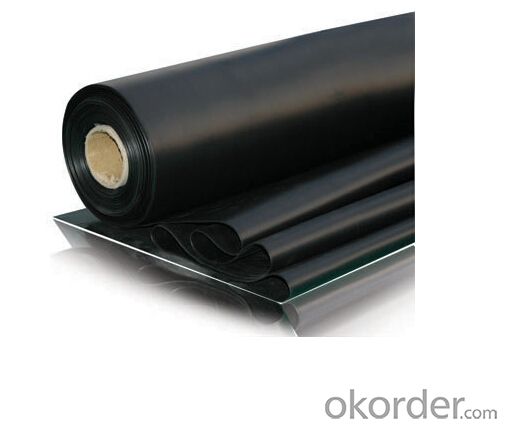
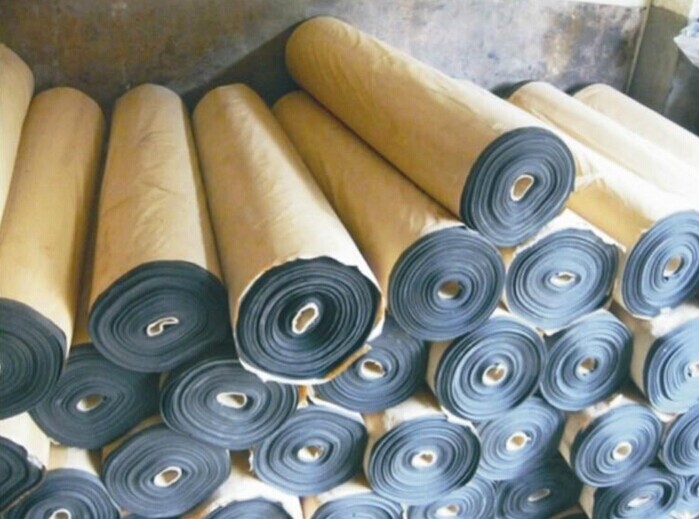
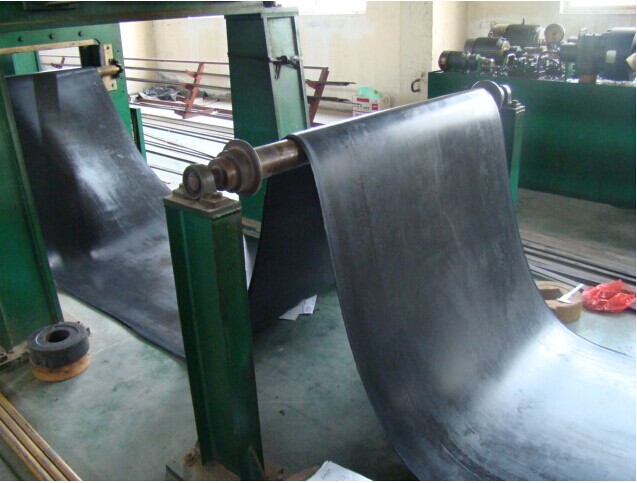
- Q:Can a waterproofing membrane be used for a parking garage?
- Indeed, a parking garage can benefit greatly from the utilization of a waterproofing membrane. Specifically designed to act as a barrier against water infiltration, this membrane effectively safeguards the underlying structure from potential moisture damage. Given the frequent exposure to water and moisture in parking garages due to rain, snow, and vehicle fluids, incorporating a waterproofing membrane is a vital aspect of the building envelope system. Its application on various concrete surfaces, such as the floor and walls, effectively prevents water seepage and subsequently hinders the occurrence of deterioration, corrosion, or any form of harm to the parking garage's structural integrity. Moreover, a waterproofing membrane also serves to mitigate the development of efflorescence, mold, and mildew, all of which are commonly found in damp environments. In conclusion, the implementation of a waterproofing membrane within a parking garage is an efficient approach to ensure the structure's long-term durability and functionality.
- Q:Can a waterproofing membrane be used in hospitals or healthcare facilities?
- Yes, a waterproofing membrane can be used in hospitals or healthcare facilities. It is often used in areas that require protection against moisture, such as bathrooms, operating rooms, and laboratories, to prevent water damage and maintain a hygienic environment.
- Q:Does a waterproofing membrane prevent mold and mildew growth?
- Indeed, the growth of mold and mildew can be prevented with the aid of a waterproofing membrane. These fungi flourish in environments characterized by dampness and moisture, but a waterproofing membrane acts as a barrier, thwarting the infiltration of water into the treated surfaces. By keeping moisture at bay, it diminishes the circumstances that facilitate the proliferation of mold and mildew. Nonetheless, it is crucial to acknowledge that while a waterproofing membrane is effective in preventing such growth, it does not ensure absolute protection. Adequate ventilation and consistent upkeep are also imperative in the battle against mold and mildew.
- Q:Can a waterproofing membrane be tested for quality or performance?
- Yes, a waterproofing membrane can be tested for quality and performance. Several tests can be conducted to evaluate the effectiveness and durability of the membrane. One common test is the water penetration test, where the membrane is subjected to a certain amount of water pressure to determine if it allows any water to pass through. Another test is the adhesion test, where the strength of the membrane's bond to the substrate is evaluated. Additionally, tests can be conducted to assess the membrane's resistance to chemicals, UV radiation, temperature fluctuations, and physical stress. These tests help determine if the membrane meets the required standards and can perform effectively in various conditions.
- Q:Is a waterproofing membrane resistant to saltwater or salt damage?
- Yes, a waterproofing membrane is typically resistant to saltwater or salt damage. Waterproofing membranes are designed to provide a barrier against water and moisture, and they are commonly used in various applications where exposure to saltwater or salt is expected, such as in marine environments or near coastal areas. These membranes are often made from materials that are specifically formulated to withstand the corrosive effects of saltwater or salt. Additionally, the installation of a waterproofing membrane includes proper preparation and sealing techniques to ensure its resistance to saltwater or salt damage. However, it is important to note that the specific resistance of a waterproofing membrane to saltwater or salt damage may vary depending on the type and quality of the membrane used. Therefore, it is recommended to consult with a professional or manufacturer to ensure the appropriate membrane is selected for the specific application and environment.
- Q:How does a waterproofing membrane handle water pressure from adjacent structures?
- A waterproofing membrane is designed to handle water pressure from adjacent structures by creating a barrier that prevents water from penetrating through it. The membrane is typically installed on the exterior side of the structure, such as the foundation walls, and acts as a protective layer against water infiltration. The membrane itself is usually made of a durable and flexible material, such as rubber, PVC, or bitumen, that is resistant to water and can withstand the pressure exerted by water. It is installed in such a way that it forms a continuous and seamless barrier that covers the entire surface of the structure. When water pressure from adjacent structures, such as soil or groundwater, is exerted on the membrane, it resists the pressure and prevents water from seeping through. This is achieved through the combination of the membrane's material properties and the way it is installed. The waterproofing membrane is typically installed with proper surface preparation, ensuring that the surface is clean, smooth, and free from any debris or sharp objects that could potentially damage the membrane. It is then applied using adhesives, heat fusion, or mechanical fastening techniques to create a secure and watertight seal. In addition to the membrane itself, other components, such as drainage systems and protection boards, may be incorporated into the waterproofing system to further enhance its performance and manage water pressure effectively. These additional components help to divert water away from the structure and relieve any excess water pressure that may build up. Overall, a properly installed and maintained waterproofing membrane is designed to handle water pressure from adjacent structures by creating a reliable and durable barrier that prevents water infiltration and protects the structure from potential water damage.
- Q:Are waterproofing membranes resistant to algae growth?
- Yes, waterproofing membranes are typically resistant to algae growth. The materials used in these membranes are often designed to be non-porous and inhibit the growth of algae and other organic matter. Additionally, some membranes may have additional features such as UV resistance or anti-microbial properties that further deter algae growth.
- Q:Are waterproofing membranes suitable for crawl spaces?
- Yes, waterproofing membranes are suitable for crawl spaces as they provide a protective barrier against moisture and water intrusion, preventing issues such as mold growth, structural damage, and musty odors.
- Q:Can a waterproofing membrane be used on tunnels with pedestrian traffic?
- Tunnels with pedestrian traffic can indeed utilize a waterproofing membrane. Such membranes are frequently employed in subterranean structures, such as tunnels, to avert water infiltration and safeguard the structure against water-related harm. Generally, these membranes are applied to the outer walls and floors of the tunnel, thereby forming a barrier against water penetration. They are engineered to endure the weight of traffic and provide long-lasting protection against moisture. Furthermore, certain waterproofing membranes possess anti-slip characteristics, ensuring the safety of pedestrians traversing the tunnel. All in all, employing a waterproofing membrane on tunnels with pedestrian traffic constitutes an effective approach to bolster the longevity and safety of the structure.
- Q:Can a waterproofing membrane be used on modified bitumen roofs?
- Yes, a waterproofing membrane can be used on modified bitumen roofs. In fact, it is a common practice to install a waterproofing membrane over modified bitumen roofs to provide an additional layer of protection against water infiltration. This is especially important in areas with heavy rainfall or where the roof is prone to frequent exposure to water. The waterproofing membrane helps to seal any potential cracks or gaps in the modified bitumen roofing system, preventing water from seeping through and causing damage to the underlying structure. Additionally, the waterproofing membrane can also enhance the overall durability and longevity of the roof by protecting it from the harmful effects of moisture.
1. Manufacturer Overview |
|
|---|---|
| Location | |
| Year Established | |
| Annual Output Value | |
| Main Markets | |
| Company Certifications | |
2. Manufacturer Certificates |
|
|---|---|
| a) Certification Name | |
| Range | |
| Reference | |
| Validity Period | |
3. Manufacturer Capability |
|
|---|---|
| a)Trade Capacity | |
| Nearest Port | |
| Export Percentage | |
| No.of Employees in Trade Department | |
| Language Spoken: | |
| b)Factory Information | |
| Factory Size: | |
| No. of Production Lines | |
| Contract Manufacturing | |
| Product Price Range | |
Send your message to us
EPDM Waterproofing Rubber Membrane 1.5mm 2.0mm
- Loading Port:
- Qingdao
- Payment Terms:
- TT OR LC
- Min Order Qty:
- 20000 m²
- Supply Capability:
- 100000 m²/month
OKorder Service Pledge
OKorder Financial Service
Similar products
New products
Hot products
Related keywords
